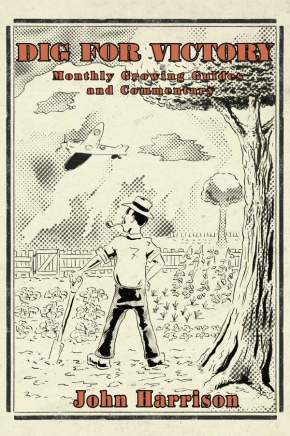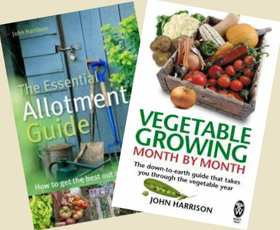FOOD FOR YOUR GARDEN
FROM YOUR GARDEN
The importance of compost was dealt with in the January “Guide”. Now it is proposed to tell you what you can use to make it and how to make it – in pictures.
WHAT YOU CAN USE
Leaves, grass cuttings, straw sods, lawn mowings, haulms of peas, beans and potatoes, vegetable tops, hedge clippings, weeds, and faded flowers. In fact, any plant refuse not needed for stock feeding.
WHAT YOU CAN’T USE
Cinders, paper, coal ashes, thick woody stems, sawdust, and any materials tainted with oil, creosote, tar or with any poisonous chemical. Avoid cabbage roots affected by ‘club-root’ disease.
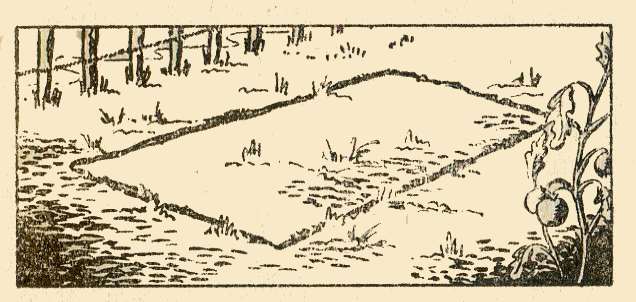
1. Choose site, in shade if possible, on ground not used for cropping. Width 4-7 ft. Length depends on amount of material available.
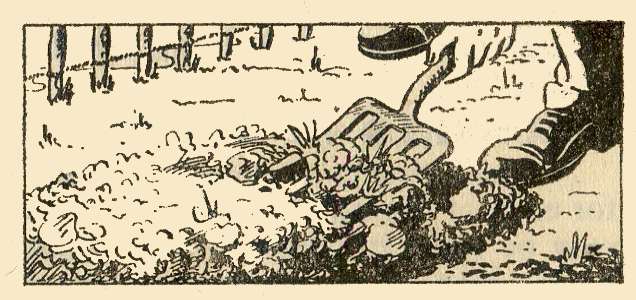
2. Cover with layer of vegetable refuse (the more mixed and broken up the better) to 6-9 in. depth. If dry, moisten and tread down well. If green and sappy, lay loosely.

3. (Left) Cover with 2 in. layer of animal manure (horse, cow, pig, poultry, pigeon, rabbit) or sewage sludge.
(Right) If animal manure is not available, sprinkle with one of the special proprietary chemicals or with sulphate of ammonia.
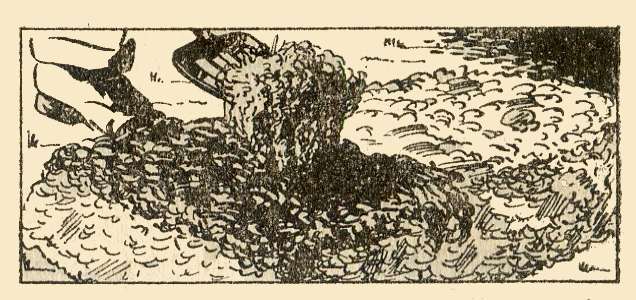
4. Repeat layers 2 and 3 until heap is 3-5 ft. high. If more material is to be dealt with, start a new heap.
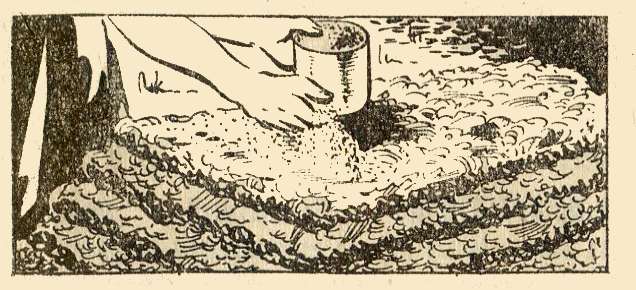
5. Sprinkle a little lime, ground limestone or chalk, after every foot or so, or apply layer of chalky soil about 2 in. thick. But if using chemicals, follow maker’s directions about lime.
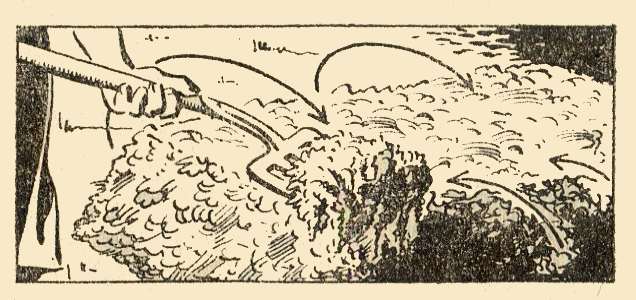
6. When heap has cooled down, turn it over from one end to the other, so that the outside material goes to the middle and that from the middle to the outside.

